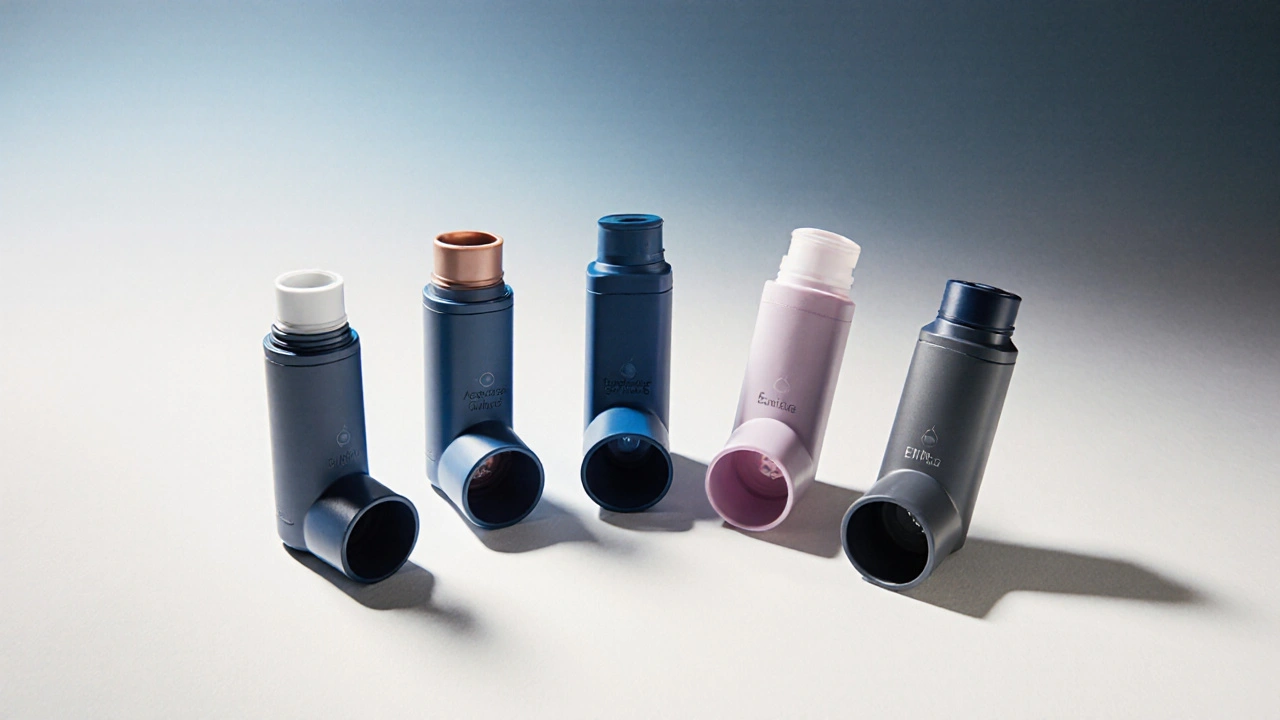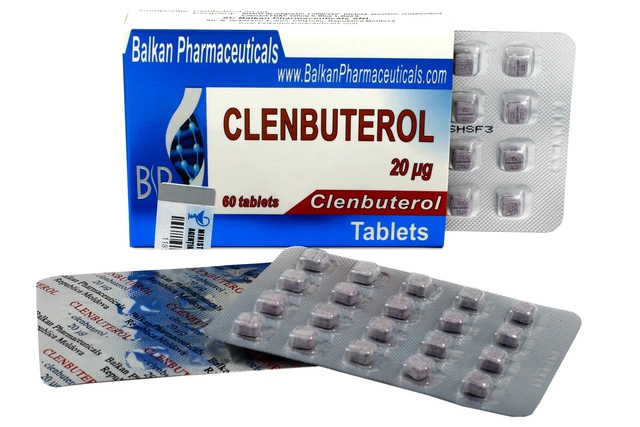Asthma Inhaler Decision Calculator
Find Your Best Match
Answer a few simple questions to see which asthma inhalers best match your needs.
When you or a loved one need a daily inhaler to keep asthma or COPD symptoms at bay, choosing the right combo can feel overwhelming. Seroflo pairs a corticosteroid with a long‑acting bronchodilator, but it isn’t the only option on the market. This guide breaks down how Seroflo stacks up against the most common alternatives, walks you through the key factors to consider, and gives you a handy checklist so you can make a confident, informed decision.
What is Seroflo?
Seroflo is a fixed‑dose combination inhaler that contains fluticasone propionate (a corticosteroid) and salmeterol xinafoate (a long‑acting beta‑agonist). It is delivered via a press‑urated metered‑dose inhaler (pMDI) and is indicated for maintenance treatment of asthma and chronic obstructive pulmonary disease (COPD). Each actuation provides 250µg of fluticasone and 50µg of salmeterol, and the typical adult dose is two inhalations twice daily.
Core Ingredients - Fluticasone & Salmeterol
Fluticasone propionate is an inhaled corticosteroid (ICS) that reduces airway inflammation by suppressing cytokine production. In clinical trials it lowered asthma exacerbation rates by about 30% compared with placebo.
Salmeterol xinafoate is a long‑acting β2‑agonist (LABA) that relaxes airway smooth muscle for up to 12hours, improving breathlessness and exercise tolerance.
Why Use a Combination Inhaler?
- Convenience - one device delivers both anti‑inflammatory and bronchodilator action.
- Adherence - patients are more likely to stay on schedule when they only need to carry one inhaler.
- Synergy - the steroid reduces inflammation while the LABA keeps airways open, offering better overall control than either component alone.
Major Alternatives on the Market
Below are the most widely prescribed combo inhalers that compete with Seroflo. All of them pair an inhaled corticosteroid with a long‑acting bronchodilator, but the specific drugs, dosing, and device types differ.
- Advair Diskus (fluticasone propionate / salmeterol) - same active ingredients as Seroflo but delivered via a dry‑powder inhaler (DPI).
- Symbicort Turbuhaler (budesonide / formoterol) - uses budesonide (ICS) plus formoterol (LABA) in a DPI.
- Breo Ellipta (fluticasone furoate / vilanterol) - once‑daily DPI with newer steroid and LABA.
- Relvar Ellipta (fluticasone furoate / vilanterol) - essentially the same formulation as Breo, marketed for both asthma and COPD.
- Dulera (budesonide / formoterol) - pMDI format similar to Seroflo but with budesonide instead of fluticasone.

Decision‑Making Criteria
When you compare Seroflo with the alternatives, focus on these five factors. Each factor can tip the balance depending on personal health, lifestyle, and insurance coverage.
- Device Preference: pMDI (Seroflo, Dulera) vs. DPI (Advair, Symbicort, Breo, Relvar). DPIs require a strong inhalation effort, while pMDIs need good coordination.
- Dosage Frequency: Seroflo and Advair require twice‑daily dosing; Breo and Relvar are once‑daily, which can improve adherence for busy people.
- Side‑Effect Profile: Fluticasone tends to cause slightly more oral thrush than budesonide; salmeterol has a longer half‑life but a higher risk of cardiovascular side effects in susceptible patients.
- Cost & Insurance: Generic fluticasone/salmeterol combos (e.g., generic Seroflo in Australia) are often cheaper than branded DPIs like Breo.
- Clinical Evidence: All combos have proven efficacy, but head‑to‑head trials show Breo’s once‑daily dosing may reduce exacerbations in severe asthma by ~15% compared with twice‑daily fluticasone/salmeterol.
Side‑Effect Comparison Table
| Inhaler | Common Local Effects | Systemic Concerns | Device‑Related Issues |
|---|---|---|---|
| Seroflo (pMDI) | Oral thrush (≈10%), hoarseness | Potential adrenal suppression at high doses | Requires coordination; propellant‑related taste |
| Advair Diskus (DPI) | Oral thrush (≈8%), cough | Similar systemic risk to Seroflo | Needs strong inhalation; inhaler can jam |
| Symbicort Turbuhaler (DPI) | Less thrush (≈5%) due to budesonide | Lower systemic exposure than fluticasone | Device dust‑off can be messy |
| Breo Ellipta (DPI) | Very low thrush (<3%) | Vilanterol has minimal cardiac impact | Once‑daily, easy for seniors |
| Dulera (pMDI) | Oral thrush (≈7%) | Similar to Seroflo, but budesonide less lipophilic | Same coordination needs as Seroflo |
How to Choose the Right Inhaler for You
Below is a quick decision tree you can follow, based on the criteria above.
- Do you prefer a once‑daily dose? → Consider Breo Ellipta or Relvar Ellipta.
- Do you have difficulty generating a strong inspiratory flow? → Choose a pMDI like Seroflo or Dulera.
- Is cost a major factor? → Check if your pharmacy stocks a generic version of Seroflo; it’s usually cheaper than branded DPIs.
- Are you prone to oral thrush? → Budesonide‑based combos (Symbicort, Dulera) have a lower incidence.
- Do you have a heart condition that limits LABA use? → Discuss with your doctor; fluticasone/salmeterol combos have slightly higher cardiovascular warnings.
Real‑World Patient Experiences
Emily, a 38‑year‑old teacher from Melbourne, switched from Advair Diskus to Seroflo after a pharmacist explained the cheaper generic option. “I love the pMDI because it’s small enough to fit in my purse,” she says. “The only tweak was learning to coordinate the spray, but a spacer helped.”
James, a 62‑year‑old retiree with COPD, prefers Breo Ellipta. “One inhalation in the morning is all I need. I hardly ever get a sore throat, and the inhaler’s click feels reassuring.”
These anecdotes illustrate that personal habits-like whether you carry a spacer or how often you remember to take a dose-can be just as decisive as the chemical makeup.

Checklist Before Switching Inhalers
- Confirm the new inhaler’s dose matches your current prescription (e.g., 250µg fluticasone is equivalent to 200µg budesonide in many guidelines).
- Ask your prescriber about a trial period; most insurers allow a 30‑day switch.
- Check inhaler technique with a pharmacist-incorrect use can halve the drug’s effectiveness.
- Arrange a follow‑up appointment after 4‑6 weeks to review symptom control and side‑effects.
- Make sure your insurance formulary lists the new brand; otherwise you may face higher out‑of‑pocket costs.
Frequently Asked Questions
Frequently Asked Questions
Is Seroflo safe for children?
Seroflo is approved for patients aged 12years and older. For younger children, pediatric guidelines usually recommend a lower‑dose inhaled corticosteroid alone, or a different combination such as budesonide/formoterol with close monitoring.
Can I use a spacer with Seroflo?
Yes. A spacer reduces oropharyngeal deposition, lowering the risk of thrush and making coordination easier. Just shake the inhaler, attach the spacer, and inhale slowly.
How does Seroflo compare to Breo Ellipta in terms of exacerbation risk?
Head‑to‑head studies in severe asthma show Breo’s once‑daily fluticasone furoate/vilanterol reduces severe exacerbations by about 15% more than twice‑daily fluticasone/salmeterol (the backbone of Seroflo). However, individual response varies, and cost may tip the balance toward Seroflo for many patients.
Do I need to rinse my mouth after each dose?
Rinsing with water and spitting out is recommended after every inhaled corticosteroid dose, including Seroflo, to prevent oral thrush and hoarseness.
What should I do if I miss a dose?
Take the missed inhalation as soon as you remember, unless it’s almost time for the next scheduled dose. In that case, skip the missed one-don’t double up.
Bottom Line
Seroflo offers a solid balance of effectiveness, affordability, and familiar pMDI handling. If you need a twice‑daily regimen, have good coordination, or are price‑sensitive, it’s a strong contender. For patients who crave once‑daily simplicity, a lower thrush risk, or have difficulty with pMDI coordination, newer DPIs like Breo or Relvar may edge ahead. Use the checklist and decision tree above, talk with your prescriber, and weigh insurance coverage carefully. The right inhaler is the one you’ll actually use every day.






Patrick Fortunato
October 12, 2025 AT 13:36If you’re paying Irish taxes you’ll love the cheap generic version.
Manisha Deb Roy
October 13, 2025 AT 09:03Seroflo is a solid choice for many asthma sufferers, especially when cost is a big factor.
The pMDI format gives you a familiar spray that’s easy to master, even if you’re not a pro.
Just remember to rinse your mouth after each use, otherwise oral thrush can sneak up on you.
In the US the price tag can be a bit steep, but you can definitely find discount coupons or patient assistance programs that make it more affordable.
Overall it’s a safe and effective combo, and it defiantly beats having two separate inhalers in your pocket.
Helen Crowe
October 14, 2025 AT 04:30When you look at the pharmacodynamics of fluticasone versus budesonide, the first‑order absorption half‑life differences become clinically relevant.
Fluticasone propionate has a higher glucocorticoid receptor affinity, which translates into roughly a two‑fold potency advantage over budesonide in airway tissue.
However, budesonide’s lipophilicity is lower, allowing for more rapid systemic clearance and thus a marginally better safety profile in high‑dose regimens.
Salmeterol’s β2‑adrenergic agonist action is characterized by a 12‑hour bronchodilation window, whereas formoterol, found in Symbicort, provides a faster onset of action within minutes but a similar duration.
The device aerosol particle size distribution also matters; pMDIs like Seroflo typically generate a mass median aerodynamic diameter (MMAD) of 2–3 µm, which is optimal for both central and peripheral airway deposition.
By contrast, dry‑powder inhalers, such as Advair Diskus, can produce slightly larger particles that may deposit preferentially in the larger airways, potentially requiring a stronger inhalation effort from the patient.
From a pharmacoeconomic standpoint, the availability of off‑label compounding for fluticasone/salmeterol can slash the per‑dose cost by up to 40 % in many European formularies.
In the United States, insurance formularies often place Breo Ellipta on a higher tier, meaning higher out‑of‑pocket co‑pays for many patients.
Adherence data consistently shows that once‑daily regimens improve medication possession ratio by approximately 10‑15 % compared with twice‑daily schedules.
Nevertheless, patient preference for device type frequently overrides dosing frequency, especially in elderly populations with reduced inspiratory flow.
Clinical trials such as the IMPACT study have demonstrated a modest but statistically significant reduction in severe exacerbations when switching from a twice‑daily fluticasone/salmeterol regimen to once‑daily fluticasone furoate/vilanterol.
Safety signals regarding cardiovascular events remain low across all LABA‑containing combos, but vigilance is warranted in patients with underlying arrhythmias.
Oral candidiasis rates can be mitigated by rinsing the mouth after inhalation, a simple maneuver that cuts incidence by nearly half.
For patients with comorbid COPD‑asthma overlap, the dual anti‑inflammatory and bronchodilator action of seroflo offers a convenient therapeutic bridge.
In summary, the choice among Seroflo, Advair, Symbicort, Breo, and Relvar should be individualized based on receptor pharmacology, device ergonomics, dosing frequency, cost considerations, and patient-specific risk factors.
Brian Pellot
October 14, 2025 AT 22:33I’ve seen a lot of patients switch between pMDI and DPI devices, and the key is comfort.
If you struggle with coordination, a DPI might feel clunky, but a pMDI needs a good breath‑hold technique.
Seroflo’s twice‑daily schedule works well for routine‑oriented folks.
Talk to your pulmonologist about inhaler technique coaching to get the most out of whichever device you pick.
Patrick McCarthy
October 15, 2025 AT 13:50Which inhaler feels better in your hand?
Try the demo kits before you decide
Geraldine Grunberg
October 16, 2025 AT 12:03When comparing Seroflo, Advair, Symbicort, Breo, and Relvar, you have to consider cost, dosing frequency, device type, side‑effect profile, and patient preference, all of which can dramatically affect adherence, efficacy, and overall quality of life.
Krishna Chaitanya
October 17, 2025 AT 04:43The battle between inhalers is a war of breath, and Seroflo is the hero that rides in just in time!
diana tutaan
October 18, 2025 AT 01:33The data presented in many marketing brochures is cherry‑picked, ignoring the higher candidiasis rates observed in real‑world studies.
Sarah Posh
October 18, 2025 AT 15:26Remember, the best inhaler is the one you’ll actually use every day, so pick the one that fits your lifestyle.
James Knight
October 19, 2025 AT 09:30Honestly, most of these so‑called “new” inhalers are just hype, and they’ll drain your wallet faster than you can say ‘asthma’.
Ajay D.j
October 20, 2025 AT 04:56In many South Asian households, the pMDI’s audible click is actually reassuring, whereas the DPI’s silent puff can feel uneasy.
Dion Campbell
October 20, 2025 AT 20:13One might argue that the pharmaceutical elite have engineered these combos to perpetuate their own market dominance, but that’s mere conjecture.
Burl Henderson
October 21, 2025 AT 18:26From a pharmacokinetic perspective, the AUC of fluticasone in Seroflo remains relatively stable across dosing intervals, which is advantageous for maintaining steady plasma concentrations, especially in patients with variable adherence patterns.
Leigh Ann Jones
October 22, 2025 AT 13:53I have to say that the whole comparison feels like a marketing brochure masquerading as a medical guide.
The tables are full of numbers that most patients will never decipher, and the prose drifts into jargon without offering practical takeaways.
Moreover, the article glosses over the real‑world challenge of device technique, which can be a make‑or‑break factor for many.
While it mentions cost, it fails to address the variability in insurance formularies that can make a ‘low‑cost’ inhaler suddenly expensive.
I also noticed that the side‑effect discussion is superficial, barely scratching the surface of steroid‑induced adrenal suppression.
The occasional mention of once‑daily dosing benefits is appreciated, but the piece could have explored adherence data more thoroughly.
Overall, the guide is a mixed bag – useful bits buried under layers of corporate‑speak.
If you’re looking for a straightforward recommendation, you might be better off consulting your healthcare provider directly.
Sarah Hoppes
October 23, 2025 AT 06:33They don’t want you to know the inhaler tracks usage.
Robert Brown
October 24, 2025 AT 00:36Stop buying brand names, get the generic!
Jesse Najarro
October 24, 2025 AT 20:03Great breakdown! I’d add that patient education on inhaler technique can shave up to 20 % off daily dose requirements, which is a game‑changer for cost management.
Dan Dawson
October 25, 2025 AT 16:53Check the local pharmacy for sample packs they often have.